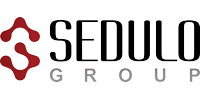Part Five of RAMP UP: A Competitive Intelligence Framework for Strategic Advantage
- Competing Products – Best Practices for Analysis and Action Starts with RIVALS
- Customer Insights That Drive Strategy: AVENUES Leads to Results
- Market Trends Analysis: A Proven Method to Outpace Competitors
- Growth Strategy: How to Convert Potential into Performance
- Strategic Planning Process: How to Build Alignment Across Teams
Strategic Alignment Requires Understanding & Planning
After most strategy planning efforts, teams walk away with different interpretations of what was discussed, what matters, and what should happen next. Insights land, leadership appears aligned, and yet, momentum fades. Research sits unused. Decisions stall. Execution suffers.
Strategy rarely fails due to weak insights. It fails when alignment breaks down and coordination falters.
That’s why the final phase of the RAMP UP framework—Understanding & Planning—anchors the strategic planning process. It turns research into decisions and decisions into action.
By the time stakeholders gather for the workshop, primary research has already been conducted. Data has been synthesized, tensions identified, and opportunities prioritized. Insights are no longer abstract—they’re real, specific, and ready for forward motion. The workshop exists to drive that motion.
RAMP UP is Sedulo’s proprietary research and strategic analysis framework. It brings structure, discipline, and clarity to conducting competitor, customer, and market research. RAMP UP is a system for transforming raw data into actionable strategy through a collaborative workshop that aligns stakeholders and accelerates decision-making. RAMP UP is built to answer a critical question: How can organizations make faster, smarter, and more aligned strategic decisions when change is constant and accelerating?
How Strategic Management Becomes Effective Actions
Strategic plans often falter when interpretation gaps emerge. Misalignment leads to delays, scope creep, and missed opportunities. The strategic planning workshop corrects this. It creates a structured space to surface disagreement, test ideas, and reach clear decisions.
Alignment isn’t declared. It’s earned through conversation, trade-offs, and shared ownership of the path forward.
The RAMP UP workshop provides this structure. It sets the stage for clarity, encourages productive friction, and builds conviction in the decisions ahead.
Inside the Strategic Planning Workshop
An effective strategic planning workshop follows five sequenced components:
- Pre-read: prepares participants and sets expectations.
- Strategic framing: establishes context and constraints.
- Collaborative exercises: explore trade-offs and options.
- Perspective pairing: unlocks cross-functional insight.
- Real-time moderation: guides the group to real decisions.

Pre-Read: Strategic Objectives Prime the Team for Maximum Engagement
Preparation begins before the meeting. Each participant receives a concise summary of the insights, tensions, and choices that will shape the discussion. This document does not rehash the final report or executive summary. It filters the complete research through a strategic lens that highlights what matters most.
The pre-read ensures that every stakeholder arrives with shared context. It highlights the key uncertainties, flags where alignment is lacking, and previews the most pressing trade-offs. Teams often use this step to identify misinterpretations early, reduce repetition in the room, and shift the meeting’s energy toward action instead of recap.
The best pre-reads do more than inform. They provoke. They force people to think about their position, test their assumptions, and enter the workshop already engaged with the material.
Strategic Framing: Aligning on a Common Beginning with a Strategy Map
The session opens by grounding the group in a common starting point. Strategic framing defines the facts, constraints, and assumptions that shape the conversation, influencing its direction and outcome. Without this alignment, teams talk past one another. With it, they navigate quickly toward shared conclusions. It sets the stage for the mission and objectives.
Framing may clarify which factors remain locked, such as regulatory conditions or financial ceilings. It also reveals where the group still has room to influence decisions. For example, in a prior session, this framing identified which operational inputs were negotiable and which were fixed. That saved hours of circular debate and accelerated strategic planning.
This step prevents misalignment from derailing the session. It aligns language, expectations, and definitions before decisions are even on the table.
Collaborative Exercises: Building Consensus Through Clarity
Exercises turn abstract strategy into structured decision-making. Each activity is designed to increase clarity and move the group closer to alignment. These are not brainstorming sessions. They are working sessions.
Opportunity Prioritization: Teams evaluate initiatives using weighted criteria such as speed to impact, return on investment, and internal feasibility. These comparisons force tough choices and reveal where conviction already exists.
Scenario Comparison: Participants test different strategic paths across time. They simulate the operational and commercial impact of pursuing one direction versus another. These timelines often reveal downstream effects that are not visible during high-level planning.
Risk Trade-Offs: Teams walk through structured ladders that map exposure across dimensions like regulatory burden, reputational cost, or operational disruption. These exercises surface tolerance levels and sharpen contingency plans.
Assumption Testing: Participants identify the core beliefs embedded in their current plan. They name what they are betting on, challenge whether those bets are valid, and flag what must be tested before action.
Each exercise builds on the last. The sequence guides the group toward greater clarity and deeper commitment to the goals and outcomes of the process.

Perspective Pairing: Connecting Teams and Objectives
Alignment improves when teams stop working in silos. Workshops pair participants across functions, business units, and levels of seniority. These pairings expose blind spots, invite friction, and generate ideas that no single team could surface alone.
Tools like the Stacey Matrix help participants navigate the complexity of decisions. By categorizing challenges based on certainty and agreement, teams quickly identify why specific issues seem difficult. Some problems resist clarity. Others trigger disagreement. The matrix provides participants with language to explain the roadblocks and choose the right approach to overcome them.
Perspective pairing expands the conversation without losing focus. It ensures that multiple vantage points shape the outcome and that decisions reflect the reality of execution, not just theory.
Real-Time Moderation: Guiding Teams to Mission Success
Workshops succeed or stall based on how they are run in the moment. Real-time moderation keeps the group moving toward meaningful outcomes. Skilled moderators listen for where energy slows, where voices go unheard, and where abstraction creeps in.
Moderators guide without dominating. They reframe confusion, pressure-test vague answers, and create space for hard truths to surface. Silence is used deliberately. So are challenges. When moderation works, it sharpens attention and pushes the group past polite agreement into actionable alignment.
The outcome is not conversation for its own sake. It is structured clarity that leads directly to the next steps: strategy execution.
Strategic Planning Steps: When to Lead Internally and When Your Business Needs Outside Insight
Many organizations choose to lead their own strategic planning sessions. With the right structure in place—clear steps, a strong pre-read, and internal coordination—teams can surface meaningful insights and begin to define mission, goals, and priorities.
For some businesses, this internal approach works well. Teams already know the issues, trust one another, and have the momentum needed to move forward. But even capable organizations reach limits. Strategic planning often exposes competing interests, unclear decision rights, and assumptions that remain unchallenged.
That is where outside insight makes a measurable difference. A neutral moderator introduces structure, reframes conflict as progress, and accelerates alignment across functions. Facilitators push the conversation beyond comfort. They identify where strategy breaks down, where roles need clarity, and where teams are solving different problems with the same data.
An external perspective also reduces friction. By stepping outside internal politics, facilitators help teams focus on what matters—aligning on the mission, clarifying goals, and identifying next steps with confidence.
Sedulo Group provides experienced, strategy-focused facilitation that keeps planning grounded and practical. Whether the need is to realign leadership, prioritize investments, or unify go-to-market strategy, outside support raises the quality and impact of the process.
Ready to bring clarity and momentum to your next strategic planning session? Contact us to start the conversation.
Industry Examples of Strategic Goals Workshops
While the structure remains consistent, the strategic planning process adapts to the unique pressures of each industry. The following examples demonstrate how teams across various sectors utilize the workshop to convert insights into alignment and strategy into action.
Strategic Planning Process in Technology
In fast-moving technology companies, the workshop often becomes the only space where product and commercial teams stop long enough to realize they’ve been solving different problems. Strategy outpaces coordination. Roadmaps shift faster than messaging, and teams sprint in parallel rather than in sync. The strategic planning process creates a structured pause to realign and refocus.
The session begins with a pre-read that outlines key market shifts, user behavior patterns, and competitive threats, providing participants with a shared context and urgency before they arrive. Strategic framing defines what’s fixed, what remains flexible, and which assumptions drive current decisions.

From there, collaborative exercises prioritize features, simulate launch scenarios, and stress-test assumptions about adoption and differentiation. Pairing engineers, marketers, and sales leaders surfaces blind spots and forces sharper thinking. Moderation keeps the session grounded in practical decisions.
By the end, teams leave aligned on go-to-market priorities, messaging, and key performance indicators (KPIs) of success. The workshop doesn’t slow velocity. It sharpens it.
Strategic Planning Process in Consumer Goods
Consumer goods teams face a different challenge: having too many ideas and not enough structure to evaluate them. Trend chasing, ingredient swaps, and category expansion dominate the calendar but rarely produce focused momentum. The strategic planning process interrupts the cycle. It forces teams to sort through competing initiatives, re-evaluate priorities, and eliminate distractions.
The pre-read distills trend data, shopper insights, and competitive moves into a short list of emerging opportunities. Strategic framing then separates what is locked in from what remains in play, while clarifying the assumptions behind the current urgency. Collaborative exercises drive innovation prioritization, simulate campaign trade-offs, and test risk tolerances. Brand, R&D, and

sales teams work in mixed pairs to uncover execution gaps. Moderation channels creative energy toward real decisions.
The result transforms strategic goals into an actionable innovation roadmap, consistent messaging, and a focused retail strategy. The workshop translates inspiration into execution.
By the end, teams leave aligned on go-to-market priorities, messaging, and key performance indicators (KPIs) of success. The workshop doesn’t slow velocity. It sharpens it.
Strategic Planning Process in Manufacturing
In manufacturing, strategic planning often fragments across departments. Engineering, finance, operations, and sales solve overlapping problems with little shared perspective. The workshop reconnects those efforts. It builds a common lens for decision-making and brings trade-offs into the open.
The pre-read outlines external forces, such as macroeconomic trends, capacity shifts, and procurement changes, that shape internal decisions. Strategic framing defines which inputs are fixed, which decisions remain fluid, and what assumptions require validation. Exercises focus on investment prioritization, supply chain scenarios, and demand forecasting. Risk ladders clarify exposure across regulatory, financial, and operational domains. Pairing cross-functional

participants forces practical integration. Moderation pushes the session forward without letting feasibility override clarity.
Teams leave with a shared investment thesis, synchronized production priorities, and a coordinated plan to respond to market shifts. The workshop brings strategy and execution together in the same room, aligning the mission and vision with the goals and objectives.
Strategic Planning Process in Professional Services
Ambiguity stalls progress in professional services. Public alignment often hides private disagreement. Messaging varies by practice. The direction feels clear, but the execution remains scattered. The workshop breaks that inertia. It provides partners with a space to surface the unsaid, refine their positioning, and commit to a focused plan.
The pre-read consolidates client feedback, competitor positioning, and demand signals. Strategic framing establishes what is fixed, what is evolving, and which assumptions drive urgency. Exercises pressure-test offerings, simulate pursuit strategy, and interrogate assumptions about buyer needs. Partners, practice leads, and business development staff work in mixed groups to challenge perspectives and expose misalignment. Moderation ensures those insights translate into execution.

The outcome is a unified go-to-market plan, sharper positioning, and internal clarity on how to win in a shifting landscape. The workshop closes the gap between insight and execution.
Why It Works
The workshop succeeds because it doesn’t exist in isolation. It synthesizes the insights gathered throughout the RAMP UP framework. When teams arrive in the room, they don’t need to start from scratch. They start from truth.
And that truth becomes action through structure, clarity, and shared accountability.
Strategic Planning Requires Alignment to Become Execution
The strategic planning process is not complete when research ends. It reaches maturity when strategy turns into execution. That transformation requires clarity, shared ownership, and a process that forces teams to define strategic objectives, prioritize strategic goals, and commit to action.
Too often, businesses mistake agreement for alignment. Workshops built around the RAMP UP framework close that gap. They bring structure to strategy development, connect short- and long-term goals, and ensure that the steps in your strategic management process are visible, actionable, and supported across the organization.
This is not a theoretical exercise. The value emerges in the planning decisions teams make together—identifying what matters, resolving uncertainty, and assigning ownership with precision. From the pre-read through to real-time moderation, every element of the workshop moves the organization forward.
Great strategies falter when mission statements remain vague, when planning lacks coordination, and when strategic objectives compete instead of complementing goals. A structured workshop brings all of this into focus.
Develop the discipline to revisit assumptions, test your strategic position, and regularly update the strategy map. Make strategic planning a living process, not a one-time event.
The result is not just a better plan; It’s an organization aligned to execute it.
Frequently Asked Questions about the Strategic Planning Process and RAMP UP
What is the role of a strategic planning workshop in RAMP UP?
The workshop activates the final phase of the RAMP UP framework. It moves insights from analysis to alignment and from alignment to execution. It ensures cross-functional buy-in before decisions are made.
What makes this strategic planning process effective across industries?
It combines structured moderation, decision-making frameworks, and tailored pre-work. The approach adapts to industry dynamics but maintains a consistent sequence designed to surface hard truths and drive commitment.
Can this strategic planning process work for smaller organizations?
Yes. The modular approach allows smaller teams to adopt the same practices: concise insight summaries, collaborative prioritization, and guided alignment. The process scales down effectively while preserving its impact.
What’s the difference between this process and traditional planning retreats?
This is not about brainstorming or team building. It’s a high-leverage session built on primary research and decision-focused exercises. It resolves ambiguity and builds a plan that people can act on.
Where can I explore the full RAMP UP framework?
Each phase—Rivals, Avenues, Market Shifts, Potential, and Understanding & Planning—is covered in the RAMP UP series. Explore the complete framework through the RAMP UP resource hub.

